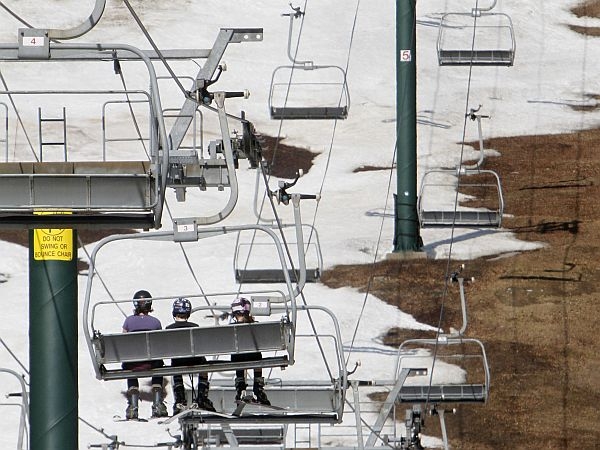
The Vermont alpine ski industry says fewer skiers and riders hit the slopes last year.
The decline isn’t surprising in light of a lack of natural snow in most places.
But industry officials say Vermont actually fared better than other parts of the country.
Statewide, total skier visits for the 2011-2012 season dropped by nearly 11 percent from the previous year.
Parker Riehle, president of the Vermont Ski Areas Association, says the warm weather, not the generally gloomy economy exerts the biggest influence on Vermont’s ski industry.
"In fact as we’ve seen in the past if you’ve got a situation where you’ve had a huge, banner snow year, the numbers came through very well regardless of the economy," says Riehle
Vermont ski areas saw on average 138 inches of snow last year. The 10-year-high was just a year earlier, with 246 inches.
Riehle credits snowmaking on more than 75 percent of Vermont’s ski terrain with preventing a more dramatic drop in skier numbers.
He says the challenge is to convince people to hit the slopes when they don’t see snow outside their windows.
To combat the backyard syndrome without busting their budgets, ski areas are using online resources like Facebook to show there’s snow on the slopes.
"With social media they’re actually able to be very nimble with a very low cost, virtually cost free marketing roll out of programs and real time weather conditions," he explains.
Reihle says Vermont benefits by being within driving distance of major metropolitan areas. Western ski resorts, which people generally fly into, saw steeper declines last season.
In Fayston, Mad River Glen has long bucked any number of ski industry trends, including snowmaking.
Snow guns cover only about 10 percent of the area’s terrain. Marketing director Eric Friedman says Mad River Glen was open for only 71 days last season. The ski area needs to operate for at least 100 days to be profitable.
Friedman says the 11 percent decline in skiers doesn’t tell the whole story because of the other businesses that depend on them.
"It was certainly a challenging season for a lot of ski areas and I think it was for the local businesses, and the inns and the lodges and the restaurants," he points out.
Friedman says the silver lining to last season was it proves Mad River can survive after such a difficult year. This was only the third year in the past 15 years the cooperatively owned ski area has lost money.